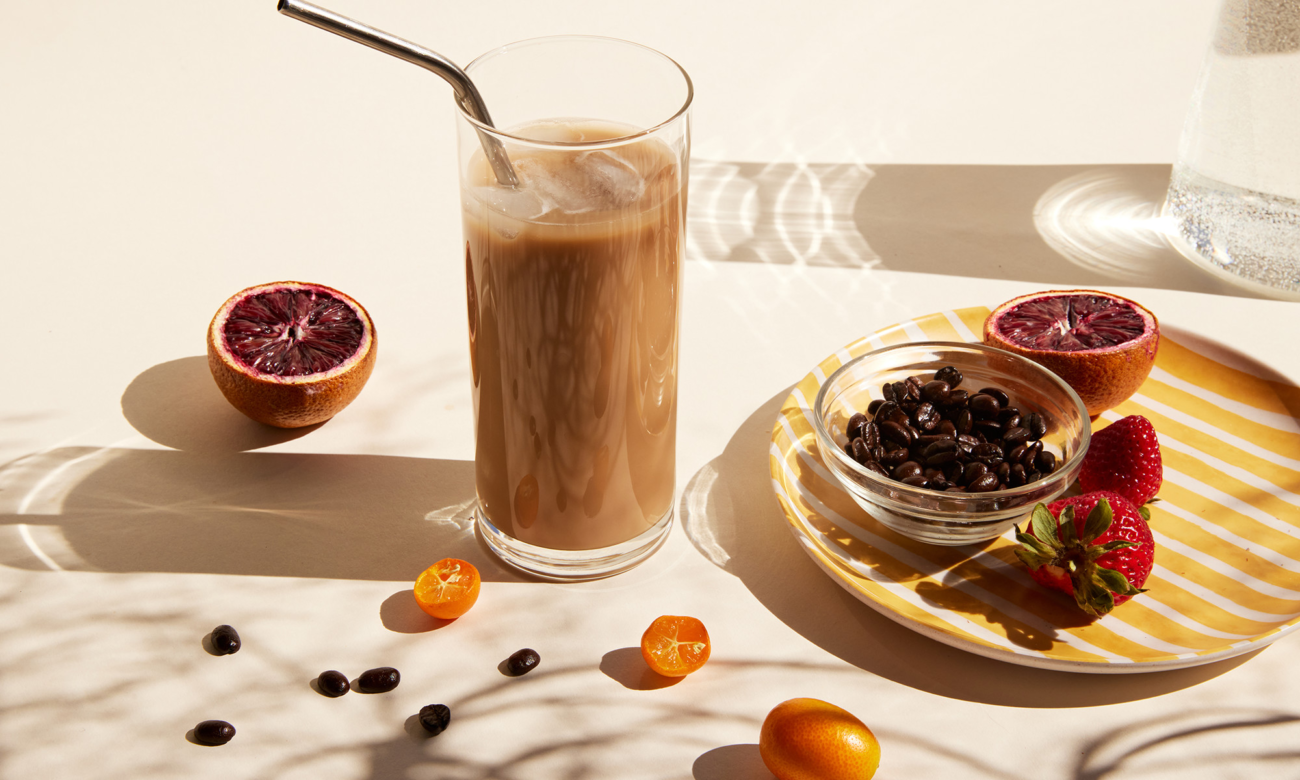Blog
The #1 Anti-Inflammatory Plant-Based Protein

- Lentils are rich in plant-based protein and antioxidants.
- Increasing your intake of plant-based protein and fiber can support heart health.
- There are many ways to enjoy lentils, such as in stews, on top of salads or even in a smoothie.
Anti-inflammatory and protein-rich foods both are getting their time in the spotlight—and for good reason. If you’re looking to eat a little bit better and nourish your body, it’s important to eat both. Fortunately, some plant proteins do double duty by fighting inflammation while also giving us a protein boost.
While plenty of plant proteins can fit into an anti-inflammatory diet, one stands out among the competition (drumroll, please) … and that is lentils. Katherine Brooking, M.S., RD, notes, “The fiber, antioxidants, essential nutrients and blood sugar–balancing benefits of lentils are powerful allies in reducing chronic inflammation.” All beans and legumes are great choices, but here we dive into the science and talk to registered dietitians to explain why we love lentils so much and delicious ways to enjoy them.
Why We Love Lentils
1. Packed with Protein
A half-cup of cooked lentils provides an impressive 9 grams of protein. “Lentils are a fantastic protein source—especially when paired with whole grains, offering a complete protein alternative to meat,” says Brooking. Protein is a nutrient that helps us feel satisfied after a meal because it takes longer to digest.
While animal proteins are typically higher in protein per serving, lentils still deliver a solid amount. Plus, they offer other nutrients, like fiber and antioxidant-rich compounds. Though most omnivores get enough protein, it can be harder for vegetarians and vegans without careful planning. The good news? Lentils and other legumes are a simple and nutrient-packed way to meet your needs.
2. Rich in Antioxidants
In addition to their protein content, lentils also help to fight inflammation because of their antioxidant properties. In fact, research has found that nutrient-rich lentils can help reduce oxidative stress and protect our immune system.
Lentils are also higher in polyphenols—compounds with antioxidant and anti-inflammatory properties—than other plant-based proteins like green peas, chickpeas and peanuts. These polyphenols may help protect against certain chronic conditions, such as cardiovascular disease and diabetes.
3. High in Fiber
Kelly Jones, M.S., RD, CSSD, a registered dietitian and sports nutritionist, points out, “Plant-based proteins offer different nutrients than animal-based proteins, with fiber being a standout benefit. Like protein, fiber promotes feelings of satiety and better blood sugar responses to meals, but it also supports gut microbiome health.”
A half-cup of cooked lentils delivers 8 grams of fiber, which is a big chunk of your daily recommended intake. Since most people aren’t eating enough fiber, adding lentils to your diet is an easy way to help reach your fiber goals. Beyond supporting gut health, a high-fiber diet is also linked with lower levels of inflammation.
4. Heart Healthy
Eating more lentils is great for your heart—they provide fiber, which supports cardiovascular health, along with other important nutrients like magnesium and potassium.
Jones adds, “A study found that replacing animal protein with just ¼ cup of pulses, like lentils, each day was able to both increase fiber and reduce cholesterol.” The researchers found that replacing protein foods (e.g., animal proteins, soy, nuts) and refined grains throughout the week with 1.5 to 2 cups of beans and legumes would help increase people’s intake of iron, fiber, potassium and magnesium while helping lower cholesterol.
“Lentils are also high in folate, a B vitamin essential for lowering homocysteine—an amino acid that, when elevated, may contribute to artery damage and increased cardiovascular risk,” shares Brooking. Lentils contain almost half your Daily Value of folate in one serving.
5. Affordable
Protein foods can get expensive, and plant-based meat replacements are pricey too. But beans and lentils remain affordable, despite increases in food prices over the past few years. You can find dried or canned lentils for just a couple of dollars, bringing the cost per serving well below $1. That’s a pretty good nutrition bang for your buck!
5 Ways to Enjoy Lentils
Luckily, lentils are just as versatile as they are nutritious. Lentils come in many varieties including green, brown, red, beluga and French green lentils. They all have slightly different tastes and textures, so experiment to find your favorite.
Brooking loves them in salads, soups, and even baked goods, like brownies, to get a flavor, texture and nutrition boost in various dishes. For beginners or people who aren’t lentil fans (yet!), Jones recommends starting small, “mixing lentils with your favorite ground animal proteins or grain dishes to benefit from their nutrients while getting to know their flavor and texture.” You can also try lentils:
- As a main dish: Many hearty dinners star lentils as a stew or other entree. Adding vegetables, or even another protein, and plenty of flavors makes lentils adaptable and filling in curries and stews. This One-Pot Lentils & Rice with Spinach is a complete meal balanced with carbs, vegetables and protein, and with easy cleanup.
- Atop a salad: A salad isn’t a meal without a protein source—and lentils are an excellent ingredient to add. Throw them on top of your favorite greens or try them in this sweet and savory Roasted Squash & Lentil Kale Salad.
- Simmered in soup: Lentil soup is a cozy bowl of goodness that’s delicious and packed with nutrition. We recommend this One-Pot Lentil & Vegetable Soup with Parmesan the next time you make a pot.
- Blended in a smoothie: If you’re out of protein powder or looking for a more affordable protein boost, try whipping up your smoothie with some lentils. In this Chocolate-Banana Protein Smoothie, their flavor is masked with cocoa powder and sweetness from the banana.
Our Expert Take
We love lentils for many reasons—they give us protein, fiber, vitamins, minerals and antioxidants, all in a budget-friendly and tasty package. They work in soups, stews and salads and may even surprise you in a smoothie.
While lentils top our list of anti-inflammatory plant-proteins, variety is key. “The best way to consume an anti-inflammatory diet is to focus on including more whole plant foods and fatty fish. Not only lentils and other pulses, but vegetables, fruits, whole grains, nuts and seeds,” encourages Jones.












